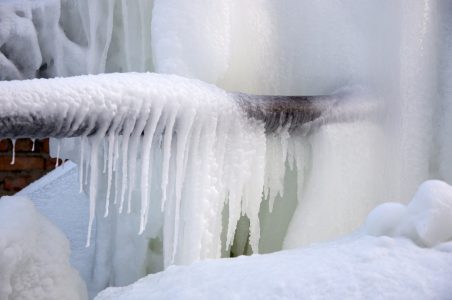How to Protect Your Plumbing from Freezing: Key Tips
How to Protect Your Plumbing from Freezing: Key Tips
Blog Article
What are your opinions about Prevent Frozen Pipes ?

Winter can damage your pipes, particularly by freezing pipes. Here's exactly how to stop it from occurring and what to do if it does.
Intro
As temperatures decline, the risk of frozen pipes increases, potentially resulting in expensive repair services and water damages. Recognizing just how to stop frozen pipes is essential for property owners in chilly climates.
Prevention Tips
Insulating vulnerable pipelines
Cover pipelines in insulation sleeves or use warmth tape to secure them from freezing temperature levels. Focus on pipelines in unheated or external areas of the home.
Heating strategies
Keep indoor areas adequately heated up, especially locations with plumbing. Open up cupboard doors to permit warm air to flow around pipes under sinks.
Just how to determine frozen pipelines
Search for lowered water flow from taps, unusual odors or noises from pipes, and noticeable frost on subjected pipes.
Long-Term Solutions
Architectural modifications
Take into consideration rerouting pipes away from outside wall surfaces or unheated areas. Add additional insulation to attics, cellars, and crawl spaces.
Upgrading insulation
Invest in premium insulation for pipelines, attics, and walls. Correct insulation helps preserve consistent temperatures and lowers the risk of icy pipelines.
Safeguarding Exterior Pipes
Garden pipes and outside faucets
Disconnect and drain pipes yard hose pipes prior to winter season. Set up frost-proof spigots or cover exterior faucets with insulated caps.
Understanding Icy Pipelines
What triggers pipes to ice up?
Pipes freeze when revealed to temperature levels below 32 ° F (0 ° C) for expanded periods. As water inside the pipelines freezes, it expands, putting pressure on the pipeline walls and potentially creating them to burst.
Threats and damages
Icy pipes can cause supply of water disturbances, residential property damage, and costly fixings. Ruptured pipes can flooding homes and create extensive structural damages.
Indications of Frozen Piping
Recognizing icy pipes early can prevent them from rupturing.
What to Do If Your Pipes Freeze
Immediate activities to take
If you think frozen pipes, maintain faucets open to ease pressure as the ice melts. Utilize a hairdryer or towels taken in hot water to thaw pipelines slowly.
Conclusion
Stopping frozen pipelines calls for positive steps and quick responses. By recognizing the causes, indications, and safety nets, home owners can protect their plumbing throughout winter.
5 Ways to Prevent Frozen Pipes
Drain Outdoor Faucets and Disconnect Hoses
First, close the shut-off valve that controls the flow of water in the pipe to your outdoor faucet. Then, head outside to disconnect and drain your hose and open the outdoor faucet to allow the water to completely drain out of the line. Turn off the faucet when done. Finally, head back to the shut-off valve and drain the remaining water inside the pipe into a bucket or container. Additionally, if you have a home irrigation system, you should consider hiring an expert to clear the system of water each year.
Insulate Pipes
One of the best and most cost-effective methods for preventing frozen water pipes is to wrap your pipes with insulation. This is especially important for areas in your home that aren’t exposed to heat, such as an attic. We suggest using foam sleeves, which can typically be found at your local hardware store.
Keep Heat Running at 65
Your pipes are located inside your walls, and the temperature there is much colder than the rest of the house. To prevent your pipes from freezing, The Insurance Information Institute suggests that you keep your home heated to at least 65 degrees, even when traveling. You may want to invest in smart devices that can keep an eye on the temperature in your home while you’re away.
Leave Water Dripping
Moving water — even a small trickle — can prevent ice from forming inside your pipes. When freezing temps are imminent, start a drip of water from all faucets that serve exposed pipes. Leaving a few faucets running will also help relieve pressure inside the pipes and help prevent a rupture if the water inside freezes.
Open Cupboard Doors
Warm your kitchen and bathroom pipes by opening cupboards and vanities. You should also leave your interior doors ajar to help warm air circulate evenly throughout your home.

Do you like more info about Preventing and dealing with frozen pipes? Give a remark down the page. We'd be glad to listen to your feelings about this page. In hopes that you visit us again before long. If you appreciated our page if you please make sure you remember to pass it around. I value your readership.
Get Estimate Report this page